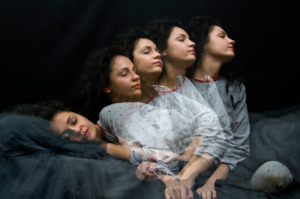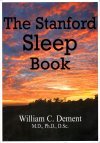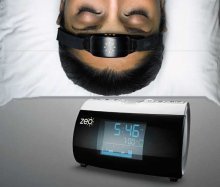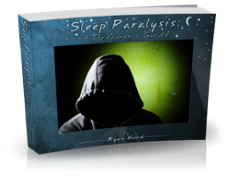
| Connect & Subscribe |
Sleep talking, murder, sex? What are parasomnias making you do in your sleep?
Jump links to the various types of parasomnias talked about on this page:
Arousal | Sleep-Wake Transition | REM-Associated | Miscellaneous
Parasomnias encompass some of the most intriguing, and sometimes terrifying, sleep disorders known to sleep medicine. From sleepwalking to night terrors, sleep paralysis to bruxism, parasomnias are a general term for inappropriate and undesirable physical behaviors that intrude on the sleeping process.
Although parasomnias affect an astounding number of both adults and children regularly, and have affected nearly each and every one of us at some point in our lives, formal education about the symptoms and typical characteristics of different parasomnias is still uncommon and perhaps explains the universal fascination (in a woah, why is this happening kind of way) with this branch of sleep disorders.
In this section, common parasomnias and their effects will be highlighted so you can gain a better understanding of what processes may control the strange behaviors you have at night.
 Sleepwalking is a common parasomnia, classified under the Arousal Disorder sub-category, talked about below.
Sleepwalking is a common parasomnia, classified under the Arousal Disorder sub-category, talked about below.
Parasomnias can occur during both NREM and REM sleep, and are marked by elements of both wakefulness and sleep. Most people, however, are not conscious of the behaviors they exhibit during sleep and upon fully waking have poor or no recall of what occurred.
Because signals from the brain while sleeping are transmitted through skeletal muscle or autonomic nervous system pathways, behaviors that are typically inhibited during normal sleep can manifest in people who suffer from parasomnias. Often these behaviors take inappropriate and even violent pathways and can prove harmful to both the individual and others.
Parasomnias are divided into 4 sub-categories: Arousal Disorders, Sleep-Wake Transition Disorders, REM-associated Parasomnias, and Miscellaneous Parasomnias.
Arousal Disorders
Arousal Disorders include sleepwalking, confusional arousals, and sleep terrors.Sleepwalking
Have you ever been told by your bed partner or a family member that you walked around mowing the lawn naked at 2 in the morning? Sounds implausible? In 2005, a man was caught by his wife mowing the lawn stark naked, returned to bed after she quietly unplugged the mower, and didn't remember a thing in the morning.
Sleepwalking, or somnambulism, is characterized by episodes during which an individual arises from deep sleep, usually in the first third of the night, and without waking walks some distance away from the bed.
Mumbling and coherent speech can accompany sleepwalking, as well as other behaviors that normally occur during the day, such as cleaning and cooking, or even driving and sex.
Sleepwalking can also rarely be accompanied by other sleep disorders such as Nocturnal Eating Syndrome, where an individual recurrently eats or drinks - often bizarre combinations of food - during sleep without any recollection of their behavior in the morning.
Violent somnambulance can also occur, in which an individual violently attacks or exhibits violent behaviors towards others during sleep. Violent sleepwalking can result in injury to both the individual and others, and has even sometimes led to famous instances of unintentional murder. Such was the case of Kenneth Parks, who proceeded to turn himself in to the police upon realizing that he had killed his mother-in law and seriously injured his father-in-law while sleepwalking. (You can learn more about Kenneth Parks' story, and other trials involving sleep disorders and violence, here.)
Confusional Arousals
Confusional arousals, or nocturnal sleep drunkenness, occur when an individual awakes only partially from deep NREM slow wave sleep. The person is typically confused, disoriented, and suffers from errors in logic as cognition is severely altered, and is unable to remember any mental activity during the episode once they awaken.
Confusional arousals are common in children, but can occur in up to 4% of adults as well.
Sleep Terrors
During sleep terrors, or pavor nocturnus (simply the Latin translation often used), the individual abruptly sits up during sleep and screams while in a state of extreme terror. Eyes are typically wide open with dilated pupils, and the victim has rapid breathing and heart rate. The victim is temporarily unable to regain full consciousness, and often goes back to sleep without waking fully.
Different from nightmares, night terrors cannot usually be recalled by the victim and are not accompanied by dreams of frightening or threatening events, as during nightmares.
Sleep-Wake Transition Disorders
A second class of parasomnias are Sleep-Wake Transition Disorders, which include rhythmic movement disorder, sleep starts, sleep talking, and nocturnal leg cramps.
Sleep-wake transition disorders occur during transitory arousals from NREM sleep, when the body does not transition smoothly from one stage of NREM sleep to another.
Rhythmic Movement Disorder
During rhythmic movement disorder (RMD), repeated rhythmic movements of the head, neck, or entire body cause the individual to rock back and forth or side to side, or sometimes even bang his or her head repeatedly into the bed or headboard. As you can imagine, intense banging of the head can result in serious injuries to the scalp and other body parts. Padding of the bed area in young children should be sufficient to prevent serious injury, but neurologic evaluation of RMD should be conducted for adults.
Sleep Starts
Sleep starts, also known as hypnagogic jerks, have been experienced by almost all of us. If you've ever had the sensation of feeling like you are falling right as you're about to sleep prompting you to suddenly jerk awake, you've experienced a sleep start. The jerks usually occur in the legs, but can also affect the arms and head.
Although sleep jerks are normal in that they occasionally occur in almost everyone, intense or frequent sleep jerks can affect the quality of sleep and result in sleep-onset insomnia or sleep deprivation.
Sleep Talking
Another common parasomnia, sleep talking, also known as somniloquy, occurs during NREM sleep stages 1 and 2, and is usually not harmful or considered a serious sleep disorder. People can have full-blown conversations while sleeping, or only mutter a couple of incoherent words.
Nocturnal Leg Cramps
Nocturnal leg cramps are painful muscle cramps in one or both legs during sleep, and can cause awakening. Because of the disruption of sleep due to awakenings from pain, frequent episodes of nocturnal leg cramps can cause daytime sleepiness and fatigue.
REM-Associated Parasomnias
Though all of the above disorders typically occur during NREM sleep, an entire class of REM-associated parasomnias occur during the REM stage of sleep. Nightmares, sleep paralysis, sleep-related painful erections, REM sinus arrest, and REM sleep behavior disorders all fall under this category of parasomnias.
Nightmares
Nightmares afflict us all; who doesn't remember at least one terrifying dream that left them paranoid and jumpy for the rest of the night, and maybe well beyond into the following day(s)? Although nightmares can leave us frightened, they are not the same as night terrors, the arousal disorder explained above.
Nightmares typically occur during the second half of REM sleep, and can almost always be recalled by the individual in detail. Victims of night terrors, on the other hand, are completely unaware of their episode and often do not remember the night terror in the morning. Nightmares are particularly common to children, but do occur occasionally in 70-80 percent of adults. Stress, personality disorders, strong artistic tendencies, weak ego boundaries, emotional or psychological trauma, drugs, or sleep deprivation can increase the frequency of nightmares.
Sleep Paralysis
Sleep paralysis consists of the temporary inability to move either right before falling asleep, or immediately upon waking. Although paralyzed victims are conscious and aware of their surroundings, they cannot voluntary move their limbs for around 1-3 minutes during the episode.
Sleep paralysis is fairly common, occurring at least once during the lives of more than half of the general public, but can cause great anxiety because of the feeling of vulnerability and loss of control victims have during the paralysis.
Sleep-Related Painful Erections
Sleep-related painful erections are rare parasomnias in which men experience intensely painful erections during REM sleep that often cause them to awaken. They can occur during REM rebound after REM sleep deprivation due to stress or medication.
Sleep-Related Sinus Arrest
Sleep-related sinus arrest is a truly terrifying disorder where otherwise healthy young adults experience asystolic intervals where their heart completely stops beating for scary-long periods of time (like 9 seconds!).
REM Sleep Behavior Disorder (RBD)
Finally, REM sleep behavior disorder (RBD) is a condition where the normal REM motor atonia that typically paralyzes you every night during REM sleep is partially dysfunctional or completely absent, causing individuals to act out their dreams to various degrees. This can result in truly bizarre nighttime actions ranging anywhere between laughing out loud, reaching, punching, kicking, running around, and angry shouting.
Violent reenactments of vivid dreams in which the victim is defending or fleeing from an attacker can be particularly dangerous and lead to self-injury or injury of the bed partner. Imagine being punched or choked in the middle of the night by your bed partner because he/she dreamt that you were a secret agent enemy assassin! (Read more about violence during sleep.)
Miscellaneous Parasomnias
The last category of parasomnias is a miscellaneous category for all other parasomnias that do not neatly fit into one of the classifications above. Although this category includes a number of interesting and unique parasomnias, for the sake of time and simplicity we will only cover some of the more common ones.
Bruxism, or Teeth Grinding
Sleep bruxism is the repeated grinding or crunching of teeth during sleep, and can prove to be extremely annoying for the bed partner. It is associated with stress or habitual grinding while awake, and can cause soreness or pain in the jaw or tooth wear. Individuals who repeatedly suffer from bruxism can wear a rubber mouth guard over their teeth to prevent damage to teeth or the jaw.
Sleep Enuresis, or Bed-Wetting
Sleep enuresis, or bed-wetting, is defined as involuntary urination during sleep after the age at which bladder control usually occurs. Although sleep enuresis is more common in children, it occasionally does affect adults, often causing much social embarrassment and stress.
It is classified as primary enuresis when a child has never achieved extended control of urination during sleep, and secondary enuresis when children or adults who have learned bladder control for at least 6 months revert and become enuretic. Avoiding fluids before bedtime, bladder training exercises, or medication can all help treat sleep enuresis.
Nocturnal Paroxysmal Dystonia (NPD)
Nocturnal Paroxysmal Dystonia (NPD) is characterized by repeated seizure-like muscle contractions that cause twisting, jerking, and other repetitive abnormal movements during sleep. Movements occurring during NPD can be very vigorous and can lead to bruises, fractures, or cuts. They typically occur repeatedly every night and can persist over a period of years. Treatment usually is needed, and can be provided in the form of the anti-epileptic drug, carbamazepine.
About This Site
Welcome! This site is continuously being created by students of Dr. William C. Dement's Sleep And Dreams course at Stanford University.
We made this site as a call to action for people all over the world to live healthier, happier, safer, and more productive lives by learning about their own sleep. We have faith that reading the information provided on this site will motivate you to be smart about your sleep deprivation and strategic about your alertness in order to live life to your fullest, most energetic potential.
In fact, we challenge you to do so! What do you say, are you up for the challenge?
Interviews With Sleep Specialists: Insights Into the Worlds of Sleep Medicine & Sleep Business
America's Most Dangerous Disorder: What Is Sleep Apnea Doing To Your Sleep?
Sleep Debt: How Much More Will You Achieve When You Reduce Yours?
The Stages Of Sleep: The Journey Through The Night
Delayed Sleep Phase: You Want To Sleep But You're Not Tired Yet
Paralyzed at Night: Is Sleep Paralysis Normal?
Sleep In Words: Smart, Strange, and Funny Quotes About Sleep
Sleep Disorders In Children: What's Keeping Your Child From A Full Night's Rest?
Attacks of Pavor Nocturnus (a.k.a. Sleep Terrors, Night Terrors, or Incubus Attacks)
The Stanford Sleep Book
Dr. Dement's pioneering textbook has been the core text for Sleep and Dreams since 1980, but it has just recently been made available to the wider public for the first time.
In it you'll find a more detailed account of the most important things you need to know about sleep, alertness, dreams, and sleep disorders. Studies, statistics, plus plenty of Dr. Dement's classic anecdotes painting the history of sleep medicine.
Preface | Intro | Contents | Get A Copy
More Sleep Resources
The Zeo
A revolution in personal sleep tracking, the Zeo is a wireless headband that transmits your brainwaves in realtime to a dock (pictured here) or your smartphone. The result? You can wake up and see exactly what stages of sleep you were in during the night! Unprecedented personalized sleep knowledge.
Sleep Paralysis: A Dreamer's Guide
Ever woken up paralyzed? A surprising number of us have, believe it or not. But few know the actual causes of this phenomenon, and fewer still how to exert control over it. Dream researcher and sleep paralysis expert Ryan Hurd shares breakthrough insights into how to do just that.
Important Disclaimer
Please Note:
The information found on this page and throughout this site is intended for general information purposes only. While it may prove useful and empowering, it is NOT intended as a substitute for the expertise and judgments of healthcare practitioners.
For more info, see our
Terms of Use.
How did we make this website?
Looks like magic, right?

You can learn how to make a great website too. Find out how!









